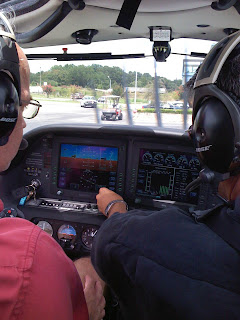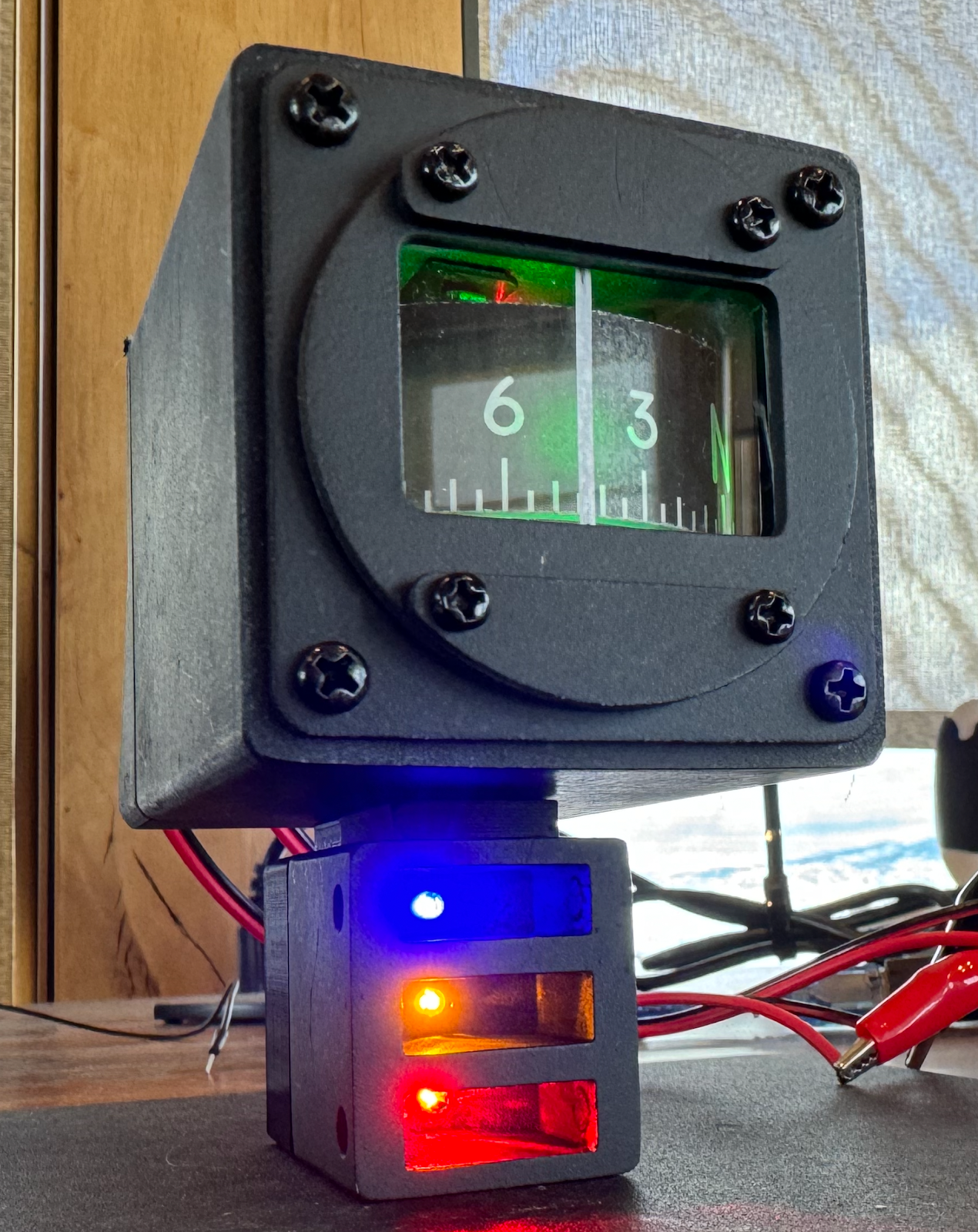Turbo time in a Cirrus SR22
Today a few of us took a new Cirrus SR22 G3 Turbo for a demo flight. This flight was to help some of my flying buddies decide what their next aircraft upgrade should be.
This particular airplane was a GTS. That means it was fully decked out with everything except air conditioning. Some of the features it had included:
We met at JGG just after lunch and hopped in for a quick jaunt up to 17000'. The turbo's big selling point is that it allows you to fly high, generally above the weather and other traffic, where you can get a little more speed and endurance. The Cirrus is not pressurized, so supplemental oxygen is needed above 12,500'. The airplane has oxygen lines integrated into the interior so you just plug in your cannula or mask into the port in the ceiling and turn on the oxygen flow.
We took off a climbed out at 120 knots and 900-1000 ft/min with the 4 seats filled and the fuel tanks a little over half full. That climb rate was maintained until we leveled off at 17,500'. We were down in N.C. before I even realized it - the airplane is pretty fast. We did some turns at altitude and played with different throttle settings to see how it affected the speed. Since the turbo is turbo-normalized, the airplane engine thinks it is operating at sea-level even when we are up at those high altitudes. This means that mixture settings are easy. Anytime you are under 88% power, you can pull the mixture back to 17.5 gallons/hour. Whenever you are above that 88% you just go full rich to make sure the engine temperatures are kept cool. Cruising at 16,000 were we getting about 202 kts at 17.5 gal/hr - better fuel economy than my old C-172i at twice the speed.
We turned back to JGG after a little while and performed an in-flight restart of the PFD to check out how the autopilot handles that. It rebooted quickly (within 30 seconds) but that was in smooth air. Jim then swung us around for a super smooth landing on 13.
Now for some pics (these came from my iPhone):


This particular airplane was a GTS. That means it was fully decked out with everything except air conditioning. Some of the features it had included:
- terrain alerting
- XM weather and radio
- flight director
- CMax taxiway diagrams and approach charts
- a full glass panel
- TKS de-ice
- airbags in the front seatbelts
- stormscope for lightning detection
- a wide composite prop
- new sunshades
- more even ventilation
- taller landing gear
- a key to open the TKS fill port
- recessed electrical switches
- car-like doors
- 6-pt engine mounts to reduce vibration and noise
- better handling characteristics
- a dedicated autopilot disconnect button
- bigger fuel tanks
- bigger TKS tanks
- new recognition lights
We met at JGG just after lunch and hopped in for a quick jaunt up to 17000'. The turbo's big selling point is that it allows you to fly high, generally above the weather and other traffic, where you can get a little more speed and endurance. The Cirrus is not pressurized, so supplemental oxygen is needed above 12,500'. The airplane has oxygen lines integrated into the interior so you just plug in your cannula or mask into the port in the ceiling and turn on the oxygen flow.
We took off a climbed out at 120 knots and 900-1000 ft/min with the 4 seats filled and the fuel tanks a little over half full. That climb rate was maintained until we leveled off at 17,500'. We were down in N.C. before I even realized it - the airplane is pretty fast. We did some turns at altitude and played with different throttle settings to see how it affected the speed. Since the turbo is turbo-normalized, the airplane engine thinks it is operating at sea-level even when we are up at those high altitudes. This means that mixture settings are easy. Anytime you are under 88% power, you can pull the mixture back to 17.5 gallons/hour. Whenever you are above that 88% you just go full rich to make sure the engine temperatures are kept cool. Cruising at 16,000 were we getting about 202 kts at 17.5 gal/hr - better fuel economy than my old C-172i at twice the speed.
We turned back to JGG after a little while and performed an in-flight restart of the PFD to check out how the autopilot handles that. It rebooted quickly (within 30 seconds) but that was in smooth air. Jim then swung us around for a super smooth landing on 13.
Now for some pics (these came from my iPhone):




Comments